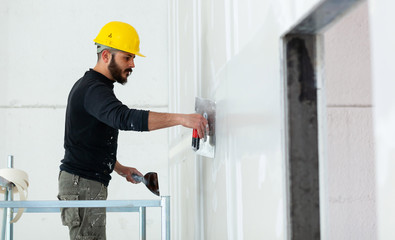Drywall repair professionals are contractors who specialize in repairing and installing drywall. Drywall Repair Las Vegas have the skills and knowledge to accurately diagnose and repair drywall damage, including cracks, holes, and water damage. Drywall repair professionals also have the tools and equipment to complete repairs quickly and efficiently.

Choosing someone with experience and a proven track record of quality workmanship is important when looking for a drywall repair professional. You can start by asking for recommendations from friends, family, or neighbors who have had drywall repair work done in the past.
Drywall is one of the most common materials used in home construction. It’s durable, inexpensive, and easy to install. It’s also one of the most easily damaged. Over time, drywall can sustain all kinds of damage. This includes cracks, holes, dents, and even water damage.
Small holes in drywall can be tricky to repair. They can make your walls look unfinished and may even provide a point of entry for termites or other critters you don’t want in your home.
The good news is that most small holes in drywall can be easily fixed with spackle and paper joint tape. But if the hole is too large for simple patching, you’ll need to cut a piece of drywall to use as a patch.
Once the patch is installed, you’ll need to cover it with drywall compound or light duty spackle. Then, sand and paint it to match the rest of your wall.
Depending on the size of the hole, you may need to use mesh tape or an adhesive patch to strengthen the patch and prevent it from collapsing into the hole. This is especially true for large holes (around 1 square foot) that are too big to be repaired with a drywall patch kit.
A variety of things can cause large holes in drywall, such as door handles that are accidentally opened too hard or furniture that is bumped against the wall. These holes can be quite large, requiring you to take the extra step of cutting out the damaged area and filling it with a new piece of drywall.
Fortunately, repairing large holes in drywall isn’t as difficult as you might think. There are a few tools and materials that you can use to get the job done quickly, and all of them are easy to find at home centers or hardware stores.
Small holes (such as those caused by screws, nails, and pushpins) can be filled with a quick-drying spackling compound or putty knife. Apply it to the hole, allow it to dry, then sand it down to blend with the rest of the wall. If the repair is larger, you may also want to repaint the wall to make sure the patch stands out less.
Drywall is a great material for building walls, but it’s not invincible. Occasionally, drywall cracks occur and can indicate a structural problem with your foundation.
The most common drywall cracks are along seams where two drywall panels meet. Typically, they run horizontally or vertically.
New homes can also develop drywall cracks as they settle over time. This settling is a natural part of the process, and it usually doesn’t cause problems for most homeowners.
However, hairline cracks that are a few inches long and appear on the ceiling or wall surface might be a sign of a more serious issue. These small cracks are often caused by house settling, but they could also be a sign of undetected water damage or something else that needs to be addressed right away.
If you do spot a crack in your home’s drywall, consider hiring a professional to evaluate it. They’ll be able to help you determine if it is a minor issue or if it needs addressing immediately.
Water damage is a serious issue that needs to be addressed quickly, as it can cause a host of problems. These include bubbling, mold, and even structural damage.
Drywall can be particularly vulnerable to water damage as it absorbs water like a sponge. The paper surface is the perfect place for mold to grow, which means that it’s important to limit moisture exposure and repair drywall damage as soon as possible.
The first step to repairing drywall damage is finding the source of the leak. If it’s a plumbing leak, you’ll want to call a licensed plumber or water restoration company to fix the issue before the problem grows worse.
